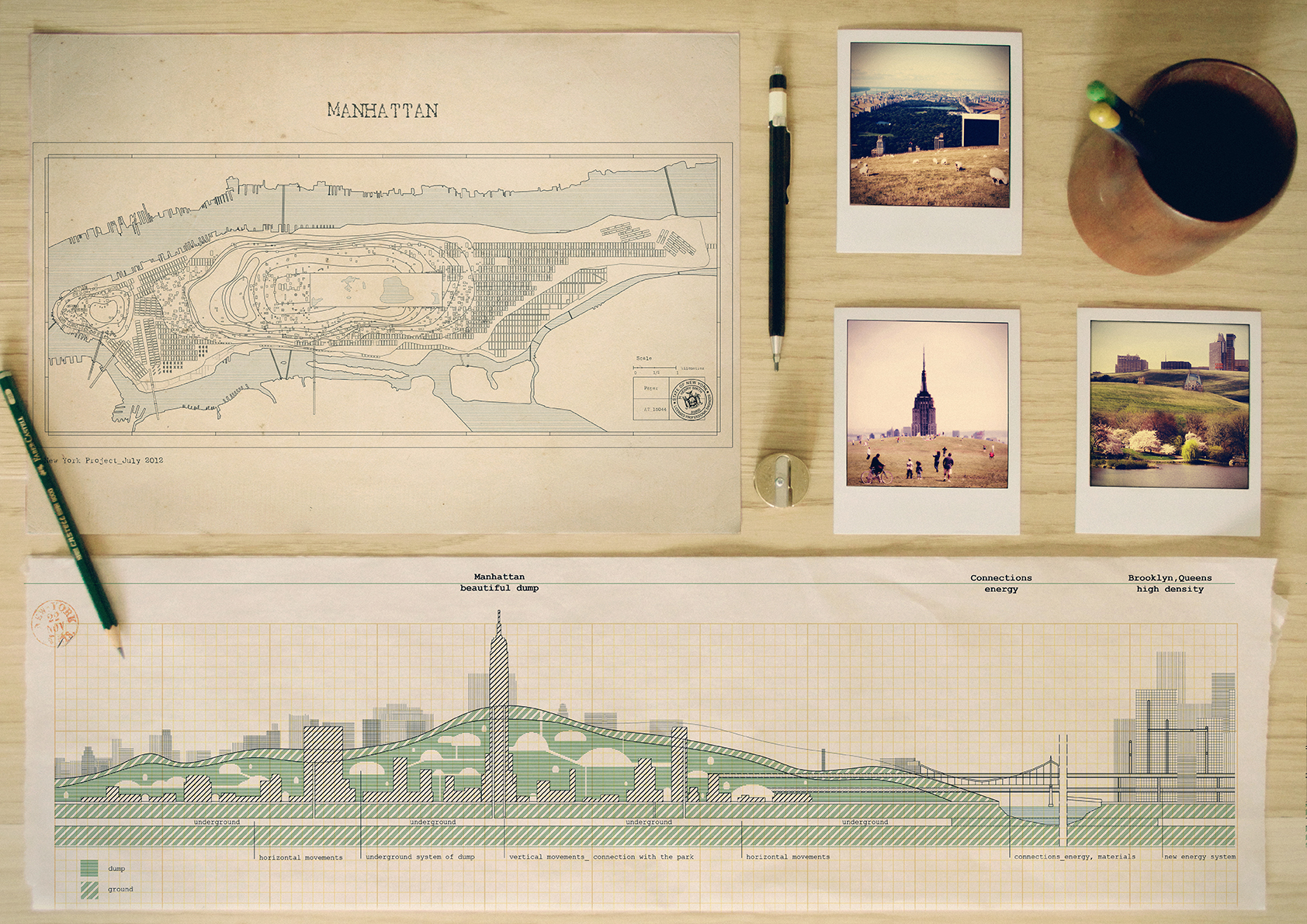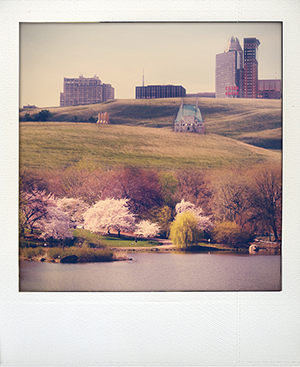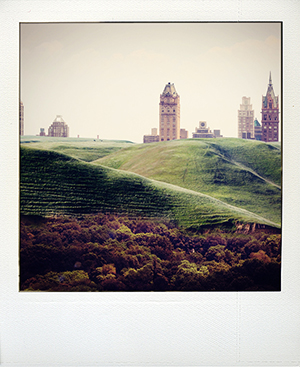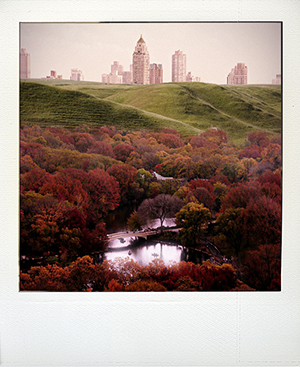THE NEW YORKER

Eirini Giannakopoulou – Stefano Carera – Hilario Isola – Matteo Norzi
interview by Alessandro Orsini (NY CityVision Juror)

AO: Come avete formato il vostro team? Qual è l’idea che sta alla base della fusione tra architettura, arte e diverse discipline?
W: Dopo decenni di distanza, arte e architettura sembrano di nuovo essere discipline capaci di ispirare profondamente l’un l’altra. La proposta del concorso è nata dallo sforzo congiunto di un duo che collabora nel campo dell’arte contemporanea, Isola e Norzi, insieme ad una coppia di architetti SCEG. Le idee alla base del progetto sono state sviluppate come in una sorta di gioco di ruolo. Gli artisti erano lì per prevedere lo scenario, gli architetti avrebbero cercato di trovare soluzioni. Ma come spesso accade quando in un gruppo ci si diverte a lavorare insieme, non c’è bisogno di giocare secondo le regole e i ruoli assegnati possono essere scambiati. Come per il tema della Biennale 2012, alla base del progetto vi è un terreno comune di dialogo e di partecipazione. È fondamentale considerare i punti di vista opposti e affrontare questioni diverse e complesse, quando si tratta di pianificazione urbana o land–art.
AO: Qual è stato il processo generativo del progetto? Riesco a immaginare il team che si scambia le idee durante la notte in qualche magazzino di Kent Avenue, come un semplice colloquio tra le diverse persone che compongono il team….
W: Sì, esattamente! Come tanti altri europei, alcuni dei componenti del nostro team si sono spostati a Brooklyn, qualche anno fa. Abbiamo il privilegio di assistere allo spettacolo dello skyline di Manhattan, tutti i giorni solo attraverso la finestra del nostro studio su Kent Av, tuttavia NYC appare ancora sconcertante se non imperscrutabile, eppur così affascinante. Il processo generativo del progetto è avvenuto attraverso settimanali call conference su skype, ma è stato durante un week–end nel Mediterraneo, tutti insieme intorno a un tavolo da pranzo con alcune bottiglie di vino, che le tavole finali hanno preso vita. Anche in questo caso è essenziale essere in grado di cambiare schizofrenicamente punto di vista, cercare di immaginare e immaginare un ambiente visionario…

AO: Le tavole erano molto affascinanti…. A me il lavoro è apparso come quello di un architetto che appena finito il suo capolavoro ha deciso di andare in pensione, componendo l’ultima scena al tavolo da disegno. Qual è stato il ruolo del lavoro di Saul Steinberg nella parte finale del lavoro grafico?
W: Saul Steinberg è rinomato per i disegni che sono apparsi su The New Yorker per quasi sei decenni. Non molte persone ricordano che si è laureato in Architettura al Politecnico di Milano nel 1940, e sicuramente la vasta gamma del suo lavoro è ancora molto da riscoprire. Era un modernista senza portafoglio, costantemente impegnato nell’attraversare i confini di un territorio visivo inesplorato. Attraverso tali cambiamenti di significato, i disegni di Steinberg sono stati per noi qualcosa di simile a un manuale, una guida, un bestiario di interpretazione dei newyorkesi, dal battere a macchina agli errori di ortografia. Inoltre, in un altro suo famoso disegno, appare un uomo che traccia una grande spirale. Ma nel momento in cui la spirale si muove verso il basso, si trasforma in piede destro, piede sinistro, poi nel contorno di un corpo, fino a giungere alla mano che impugna la matita che sta disegnando la linea. Questo emblema di un disegnatore nell’atto di generare se stesso dalla sua linea incarna un principio fondamentale del lavoro di Steinberg: la sua arte esprime il modo in cui gli artisti creano la loro arte e gli architetti l’architettura. Ogni volta che ci troviamo di fronte l’horror vacui di un A4 bianco sul quale disegnare una nuova idea, riteniamo ci sia bisogno di questa introspezione. Steinberg non rappresentava ciò che vedeva, anzi, rappresentava le persone, i luoghi e anche i numeri o le parole prese in prestito da stili d’arte, alta e bassa, passato e presente, come mezzi per esplorare i sistemi sociali e politici, le manie umane, la geografia, l’architettura, il linguaggio e, naturalmente, l’arte stessa. È per questo che abbiamo preso in prestito il suo tavolo da disegno per comporre le nostre tavole per un concorso che richiedeva una visione sul futuro di New York City ed è quindi stato il concorso stesso a rendere omaggio al suo genio.
AO: Sulle tavole mostrate un’altra epoca, se così si può dire: strumenti da disegno. Quali sono gli strumenti di progettazione utilizzati nella vostra professione?
Il progetto è stato realizzato interamente in digitale?
W: Abbiamo fortemente voluto prendere le distanze da qualsiasi tipo di sci–fi immaginario legato a New York. Tutto è digitale al giorno d’oggi, ma l’estetica della modellazione 3d sembrava inadeguata a sostenere la nostra proposta utopica e astratta. Abbiamo sentito il bisogno di esprimere qualcosa sull’identità di New York, attraverso il passato (citando Steinberg), il presente (il nostro studio) e il futuro (la visione) a livello di continuità, in cui l’uso di ironia e semplici strumenti da disegno avrebbero aiutato la comunicazione di una versione meno terrificante di quello che ci si aspetta per la metropoli e l’ambiente.
W: After decades of distance, art and architecture seem again to be disciplines able to deeply inspire each other. The competition proposal was born by the joint effort of contemporary art collaborative duo, Isola and Norzi, together with a couple of architects SCEG. The ideas behind the project developed through some sort of role game. Artists were there to foresee the scenario, architects would try to find solutions for. But as often happens when the group has fun working together, there is no need of playing by the rules and given roles can be exchanged. As per the theme of the Biennale 2012, the project is a common ground of dialogue and participation. It’s fundamental to consider opposite and diverse points of view to approach complex issues, whether it’s about urban planning or land-art.
AO: What was the generative process of the project? I can see the team sharing ideas at night in some warehouse on Kent Avenue, like small talks among the different people composing the team……
W: Yes exactly! Like so many other Europeans, some of the components of our team have to Brooklyn a few years ago. We have the privilege to watch the show of the skyline of Manhattan everyday just through the window of our studio on Kent Av, nevertheless NYC still appears puzzling if not inscrutable, yet so fascinating. The generative process of the project went through weekly Skype conference calls, but it was a Mediterranean weekend all together around a dining table and a few wine bottles that made the final boards come to life. Again, it’s essential to be able to schizophrenically change point of view to imagine and picture a visionary setting…

AO: The boards were very fascinating …..To me it appeared like an architect that just made his masterpiece and decided to retire, composing the last scene at his drafting table. What was the role of Saul Steinberg’s work on the final graphic appearance of the entry?
W: Saul Steinberg is renowned for the drawings that appeared on The New Yorker for nearly six decades. Not many people remember that he graduated in Architecture at the Politecnico di Milano in 1940, and surely the great range of his work is still very much to be re-discovered. He was a modernist without portfolio, constantly crossing boundaries into uncharted visual territory. Through such shifts of meaning, Steinberg’s lines have been something like a manual for us, a guide book, a bestiary to interpret the New Yorkers, from types to typos. Moreover in another famous drawing of his, a man traces a large spiral. But as the spiral moves downward, it metamorphoses into right foot, left foot, then the outline of a body, until finally reaching the hand holding the pencil that draws the line. This emblem of a draftsman in the act of generating himself and his line epitomizes a fundamental principle of Steinberg’s work: his art is about the ways artists make art; architects make architecture. Each time we face the horror vacui of a blank A4 to sketch a new idea, we feel this same need of self introspection. Steinberg did not represent what he saw; rather, he depicted people, places, and even numbers or words in styles borrowed from other art, high and low, past and present, as means to explore social and political systems, human foibles, geography, architecture, language and, of course, art itself. That is why we felt borrowing his drafting table to compose our own boards for a competition about a vision for the future of New York City was the proper contest to pay homage to his genius.
AO: On the boards you show another era, so to say, drawing tools. What are the design tools you use in your profession? Is the entry totally digitally produced?
W: We strongly wanted to keep a distance from any kind of sci-fi imaginary related to NYC. Everything is digital nowadays, but the digital esthetic of 3d modeling seemed inadequate to support such an utopian and abstract proposal. We have felt the need to express something of the identity of New York City which would place past (quoting Steinberg), present (our own workshop) and future (the vision) on a level of continuity, in which the use of irony and simple drawing tools would help communicating a less terrifying version of what lies ahead for the metropolis and the environment.
Related Posts :
Category: Article
Views: 4057 Likes: 0
Tags: Brooklyn , Eirini Giannakopoulou , Hilario Isola , Manhattan , matteo norzi , NYC , Saul Steinberg , stefano carera
Comments:
Info:
Info:
Title: THE NEW YORKER
Time: 29 ottobre 2012
Category: Article
Views: 4057 Likes: 0
Tags: Brooklyn , Eirini Giannakopoulou , Hilario Isola , Manhattan , matteo norzi , NYC , Saul Steinberg , stefano carera







